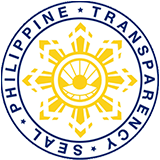The Office of the Government Corporate Counsel (OGCC) is the principal and statutory law office of government-owned-and-controlled corporations (GOCC’s), their subsidiaries, government financial institutions, government corporate offspring, government instrumentalities with corporate powers and government acquired asset corporations. Founded in 1935, it continues to celebrate its 87 Years of Service and Upholding Justice.
The OGCC first began as a small corporate counsel division under the Department of Justice (DOJ) on 1 December 1935. But its humble beginnings did not stymie the likes of the late former Senator and Associate Justice of the Supreme Court Ramon Diokno from serving as head of the corporate counsel division.
When World War II broke out in 1941, the corporate counsel division was “abolished” to pave the way for creation of the Office of the Legal Adviser of GOCCs, under the Chairmanship of the Executive Commission. Shortly after the war, the corporate counsel division was re-organized, re-established and finally became the Office of the Government Corporate Counsel (OGCC) under Executive Order No. 94.
However, it was not until 1950 that the corporate counsel division formally came to be known and referred to as the OGCC, pursuant to Executive Order No. 392. Then, on 5 January 1951, Executive Order 400 transferred the undersized but promising unit under the Office of the Solicitor General (OSG). But not long after, or on 19 June 1959, Republic Act (RA) 2327, generally referred to as the Charter of OGCC, was signed into law. Under this charter, the OGCC became a separate and distinct office from the OSG.
As it happened, RA 2327 would be the first in a series of legislations that would catapult the OGCC into the agency that it is today. Thus, on 2 June 1963, Republic Act 3838 amended RA 2327. Apart from defining the powers of the GCC as statutory legal counsel of all GOCCs, it placed all GOCC legal departments under the control and supervision of the GCC and “discouraged” GOCCs from their long-standing practice of hiring private law practitioners without the written consent of the Government Corporate Counsel (GCC).
To further strengthen and enlarge the composition of the Office, on 4 August 1969, Republic Act 6000 conferred the rank of Judges of Court of First Instance to the three (3) Assistant Government Corporate Counsels (AGCCs) at that time.
But the metamorphosis of the OGCC was far from over. Under President Ferdinand E. Marcos, it underwent further reorganizations, the most notable of which came with the issuance of Executive Order (EO) 878. This Executive Order conferred upon the GCC the same rank, emoluments and privileges as that of the Presiding Justice of the Court of Appeals, and the Deputy Government Corporate Counsel (DGCC) the rank, emoluments and privileges equivalent to an Associate Justice of the Court of Appeals. Finally, seven (7) additional AGCCs were added to the original three (3), and these ten (10) AGCCs were given the rank, emoluments and privileges of a Regional Trial Court Judge.
On 25 July 1987, former President Corazon Aquino issued Executive Order 292, otherwise known as the Administrative Code of 1987. This reinforced the unique role of the OGCC as statutory legal counsel of all GOCCs, their subsidiaries, other corporate offspring, and government acquired asset corporations.


